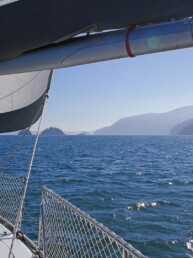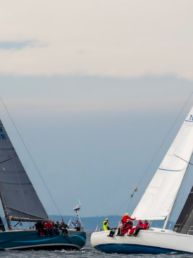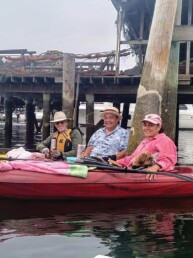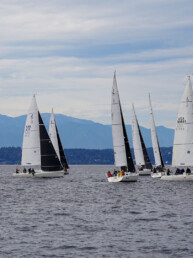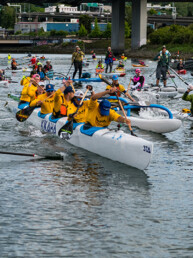In our latest destinations installment courtesy of SalishSeaPilot.com, Lynne Picard describes how situations can quickly take a turn for the worse—you just have to keep calm.
There were high fives all around as we dropped the hook in Foggy Bay, breathing a sigh of relief after navigating the reefy outer bay and transiting the narrow, shallow channel leading to our first Alaskan anchorage.
Motor-sailing from Prince Rupert, B.C. in glorious weather with a gentle swell to remind us we were at sea, we had crossed Dixon Entrance and were now the farthest north we had ever sailed. We had overcome another “hurdle” to get our friend and new crew member, Rob, to Juneau for a scheduled flight home to Winnipeg. He had never sailed before and we had assured him there were several places he could jump ship, no questions asked, but so far he was excited, involved and having the time of his life learning new things every day.
Our new Dishy was the object of much praise as Starlink had remained connected the entire way, and our phones and laptops came out as friends and family were sent pictures, Facebook updates and video calls.
After a late dinner, we poked our heads out to see if the forecast northern lights were visible in the night sky. They were not, but we noticed that Tuuli, whose crew we had met in Pruth Bay, had quietly pulled into the anchorage. We fell into our bunks for a peaceful sleep.

We were awakened by the dreaded sound of an alarm piercing the morning calm. There are a half-dozen warning alarms on our boat and it took us a while to figure out it was the propane detector alarm, and then more time to realize it was ringing because the power supply to it was low. Dishy had drained our Firefly carbon foam batteries. Mistake number one…none of us remembered to turn off Starlink when we went to bed.
Rob had an unfamiliar look of despair, so we assured him with a quick lesson in boat electrics, explaining house and starter batteries and the survival instincts of carbon foam. Then we crossed our fingers as we turned the key.
Relief.
We left the engine running to charge the house batteries while we had a relaxing breakfast, then shut it down while Jim removed and cleaned the seawater strainer and did the regular daily engine checks. Tuuli had left about an hour before and off we followed, exiting the channel to a dead calm, flat outer Foggy Bay.
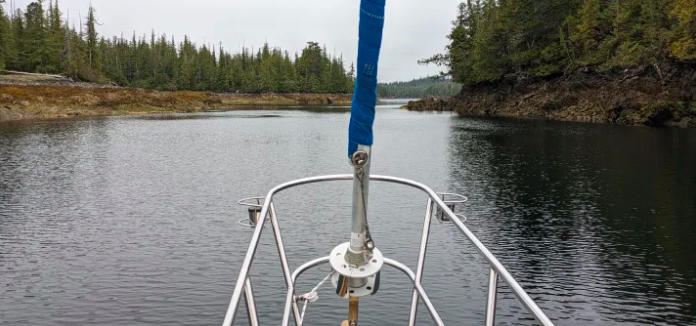
I started to detect a hot engine smell and right then the second alarm of the morning blared, along with the engine temperature light come on. Jim issued some expletives, instantly realizing he had forgotten to reopen the seacock after cleaning the seawater strainer, and so no seawater was getting to the heat exchanger, thus the engine had overheated. Mistake number two.
But, when we reopened the seacock and restarted the engine, saltwater was still not flowing through the heat exchanger to the exhaust. So we shut things down again. The engine was sizzling hot.
As Jim sussed out the issue, the current slowly carried us closer to some of the many reefs nearby. Our dinghy was hastily launched, but the 2hp engine was no use.
Sailing off the reef was impossible in the calm. I started doing what one should not do in the situation… panicking. Jim assured me we could always use the engine for short spurts to keep off the reef, but I was having none of it.
On the VHF, using a securite call on channel 16, I tried to hail a small sport fishing boat we could see off a more distant reef. The Canadian Coast Guard in Prince Rupert overheard us, passing us over to the US Coast Guard, who began to get our critical information. It all felt a little surreal.
Another cruiser, Dock Holiday, a few miles away, overheard the conversations and offered to launch their fast dinghy. Jim, meanwhile, had dinghied over to the fisherman by the reef to ask about a tow.
I started to relax as it became clear we weren’t doomed to also teach Rob how sailing adventures can suddenly end. With the coast guard and Dock Holiday standing by on channel 16, Jim returned with the good news that the fisherman was literally on the reef, away from his VHF, foraging for seaweed, gumboots and hoochi, edible delicacies he had motored 32nm from Ketchikan to find. But he consented to stop his harvesting and tow us into the safety of the anchorage.
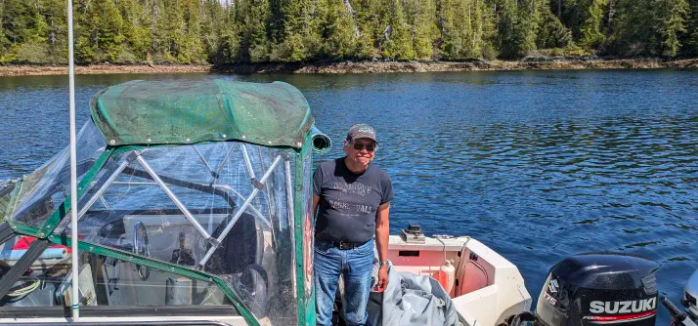
Thank you, Charles Parker. We are forever grateful to you. You were new to towing such a heavy boat with a deep draft and had never been into that anchorage. You did a masterful job.
Back at the anchorage, Jim was able to get the engine running properly. In the past, when he cleaned the strainer, he had not needed to prime the hoses with water to get the impeller to draw seawater through the system, though he thinks this time he had allowed some water to drain out from the hose between the strainer and the impeller, creating an airlock. Add another to the long list of lessons learned over the years.
We set the anchor properly and I poured a round of scotch. I recalled times sailing in Southeast Asia, when I had that feeling of intense relief that is so overwhelming after a close call. It wasn’t really that close a call, but with the way my mind works, always going to the worst possibilities, it was a scary situation. I’m a bit embarrassed by the way I reacted.
In Ketchikan we met up with Scott and Karen on Tuuli again. Over dinner we discovered that we had missed a spectacular northern lights show after we went to bed that first night in Foggy Bay, but Scott had taken several “one in a million” pictures of Silom under the brilliant sky. Thanks to them, we have a truly remarkable photo to add to our memories of the anchorage.
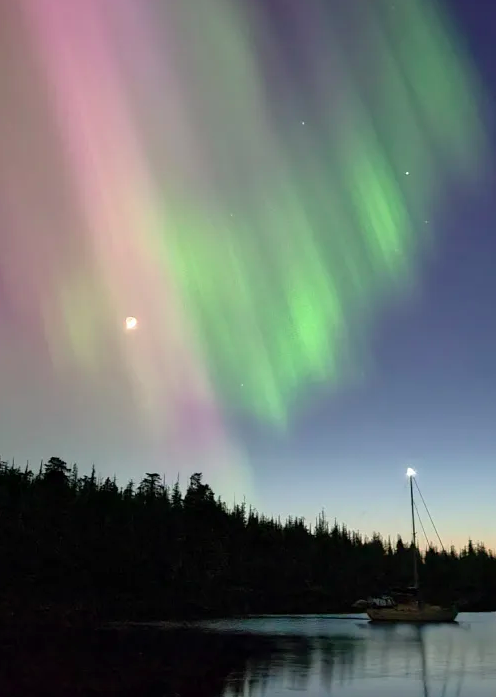
It is one Rob can show to his prairie friends while telling tales about the trip of a lifetime, when we only had to call the coast guard once!
Note: This post was originally published on SalishSeaPilot.com and is courtesy of the authors.

